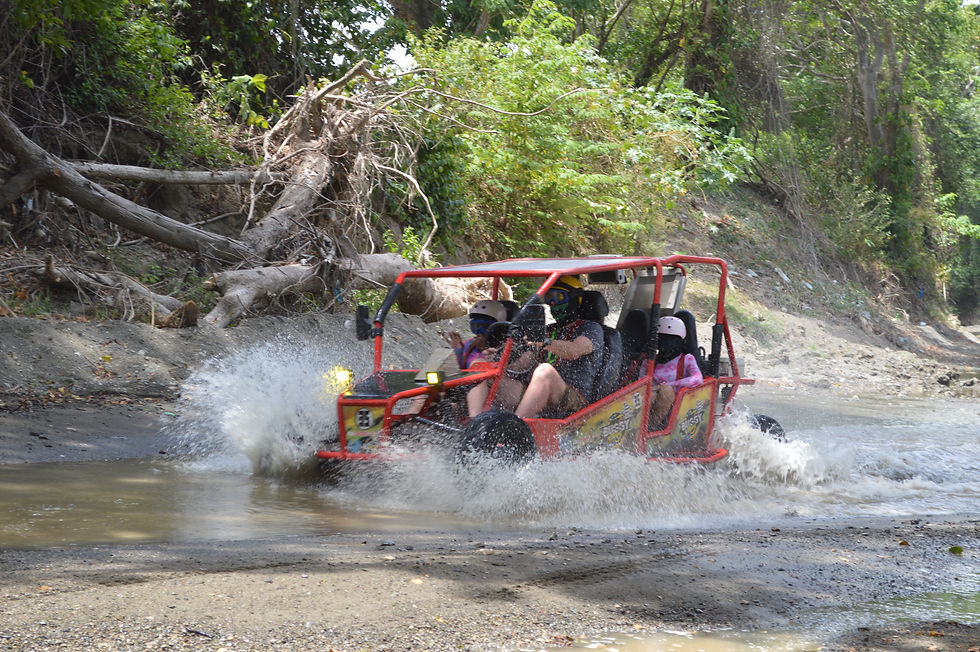Six Must-Visit Marine Parks
- bluefusiontravel
- Nov 4, 2021
- 3 min read

Some of nature's grandeur is found at the bottom of an ocean, and travel enthusiasts attach great value to these adventures. As a result, marine parks are designated areas cordoned off from sea surface to seafloor and the foreshore. The entire area is regarded as a "no-take" and includes marine life, shells, driftwood, and rocks. However, the restrictions don't apply to activities that don't harm marine life, such as snorkeling, swimming, scuba diving, and boating.
There is no warmer feeling than swimming with the dolphins or taking a family photo below the sea. That moment lives with you for the rest of your life. There are an estimated 400 marine parks across the globe, including coral reefs in about 65 countries. Here are six must-visit national parks to consider visiting.
Great Barrier Marine Park
Australia's Great Barrier Marine Park is the most extensive reef system globally and a perfect snorkeling destination. The marine park was recognized in 1975 and later added to the World Heritage List in 1981 as many travelers started to heed the pristine turquois Australian waters.
The reef beginning at Cape York in Queensland past the Tropic of Capricorn to Bundaberg spans about 2000kilometers incorporating up to 900 islands. The marine park harbors over 1500 fish species and 360 species of hard coral.
Galapagos Marine Reserve
Home to nearly 3,000 marine species, the Galapagos Marine Reserve was created in 1998 and is one of the prevalent and most naturally diverse globally. The park covers 51,352 square miles and surrounds the Galapagos Islands in the eastern Pacific.
The park is home to aquatic life such as whales, dolphins, sharks, sea lions, and others. The rich biodiversity is a result of the warm climate along the Equator. The weather also suits the many tourists that visit the marine park throughout the year. It is reported that Galapagos Marine Reserve receives up to 100,000 visitors annually.
Tubbataha Reefs Natural Park
Straddling 96,828 hectares, the Tubbataha Reefs Natural Park in the Philippines is a unique casing point of an atoll reef with a high concentration of marine kinds. The park covers the North and South Atolls as well as the Jessie Beazley Reef. The North Isle is predominant with birds and marine turtles.
Bonaire National Marine Park
Given its illustrious conservation history, Bonaire National Marine Park was established in 1979. Before its installation, there was turtle protection in 1961 and the prohibition of spearfishing a decade later. The marine park, stretching over27 kilometers, covers waters surrounding Bonaire and Klein Bonaire.
The marine park is famous thanks to its easy accessibility and is ranked in the top 5 diving destinations in the world. Most of its dive spots are accessible by boat. The park also harbors about 350 recorded fish species.
Dry Tortugas
Dry Tortugas National Park lies 113 kilometers west of Key West, Florida. The 100-square mile is habitually water with seven small islands, only accessible by boat or seaplane. Also known as the home of Fort Jefferson, the park is an ensemble of picturesque turquoise water, excellent coral reefs, marine life, and birdlife.
The marine park is grounds for camping, boating, scuba diving, swimming, and snorkeling.
The Greek Marine Parks
Part of what makes Greece a top-tier travel destination is its wild marine parks. From the first set up, Mount Olympus, in 1938, Greece has stepped up its conservation and now has ten national parks and two marine parks, namely National Park of Alonnisos and National Marine Park of Zakynthos
.
During the summer, vessels from Alonnisos and Skopelos run full-day trips through the National Park of Alonnisos. Whereas the National Marine Park of Zakynthos was established to protect the continent's most endangered marine species (the loggerhead turtle).
Don't limit your list of national parks for the family to visit to ones on dry ground. There are many more to get your feet wet with.



Comments